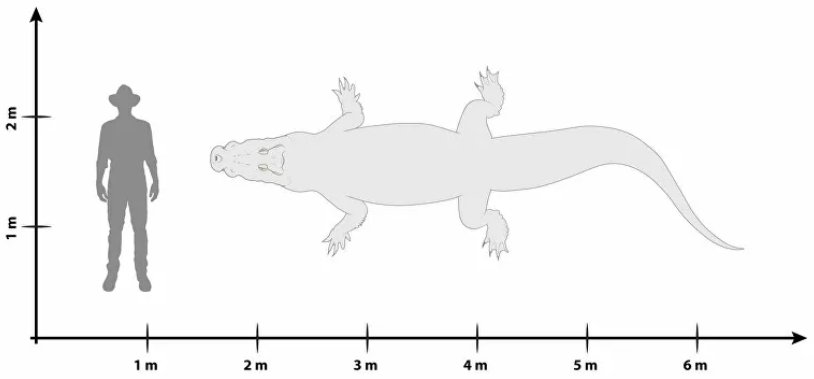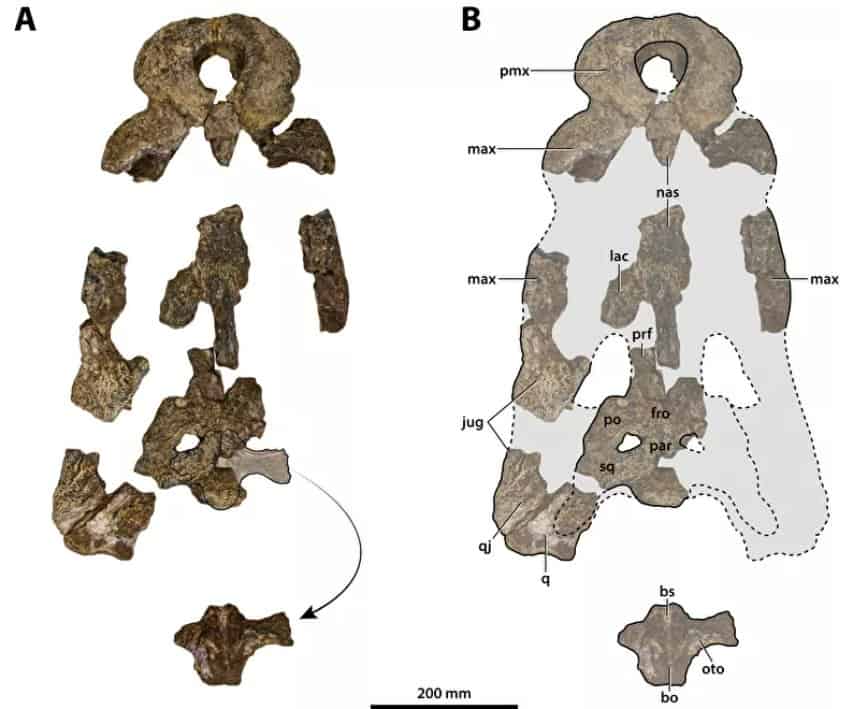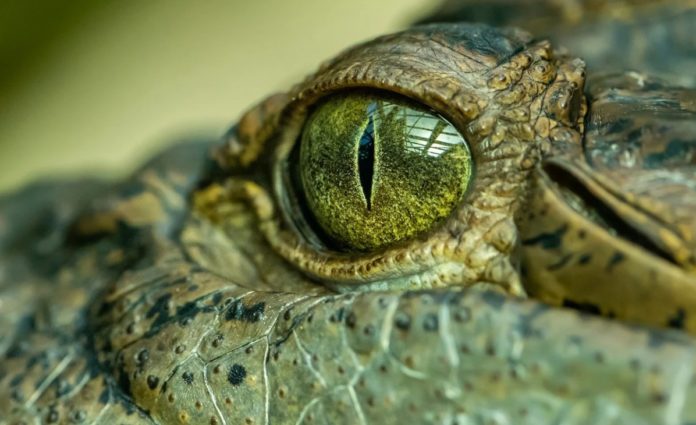Australian researchers dubbed a prehistoric reptile newly classified as “king of the swamp.” They believe it could have measured up to five meters and would look like their modern descendants but “with steroids.”
A monstrous crocodile nearly 5 meters terrified the waters of southeast Queensland in Australia millions of years ago. But only now have researchers at the University of Queensland discovered their real dimensions.
Since 1886, paleontologists have named prehistoric crocodiles from that time Pallimnarchus pollens, based on fossil fragments found in southeast Queensland.
But recent examinations of a partial skull found in the 1980s by Australian fossil collector Geoff Vincent showed enough new features to “erect a new genus and species: ‘Paludirex vincenti‘,” suggests the study, published in PeerJ.
In Latin, the genus name Paludirex translates to ‘king of the swamp’ and the species name vincenti was chosen in honor of the late Geoff Vincent, explains research co-author Jorgo Ristevski, a doctoral student at the University of Queensland.

The largest crocodile today is the Indo-Pacific marine crocodile, Crocodylus porosus. It can reach approximately the same size and its record size is even larger: the animal found in the Philippines measured 6.17 meters and weighed 1,075 kilograms.
“But ‘Paludirex’ had a wider and thicker skull, so it would have looked like an Indo-Pacific crocodile on steroids,” Ristevski said.

The researcher painted a picture of this terrifying beast that would have been “one of the main predators in southeast Queensland during the Pliocene epoch, between 5.33 and 2.58 million years ago.”
Other related studies are currently underway to determine why these huge crocodiles went extinct, while their slimmer relatives survived to this day.
Steve Salisbury, a senior lecturer at the University of Queensland and a co-author of the study, believes there could be at least two causes: competition with other species or climate change that caused drought in their ‘natural habitat’.
